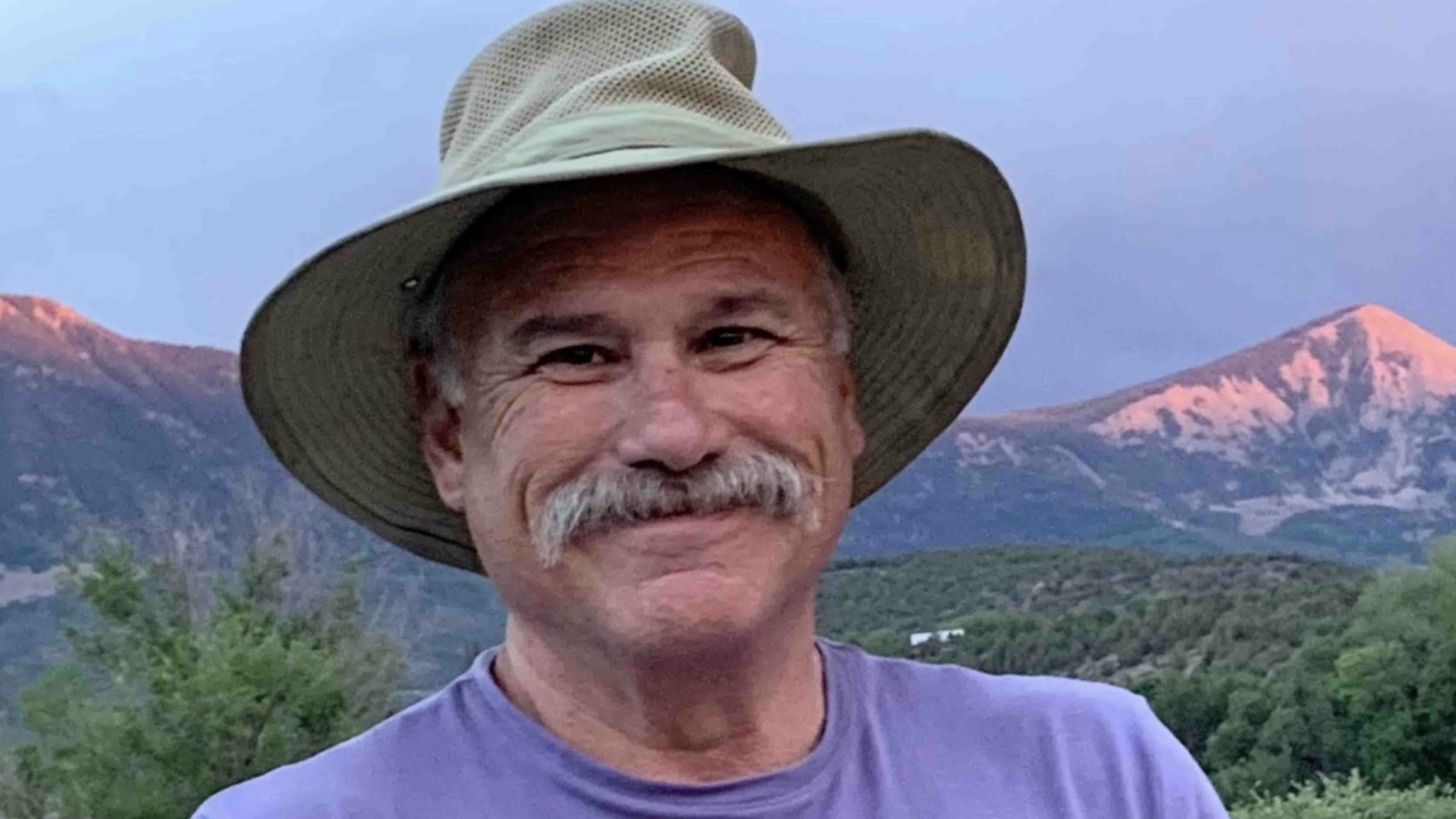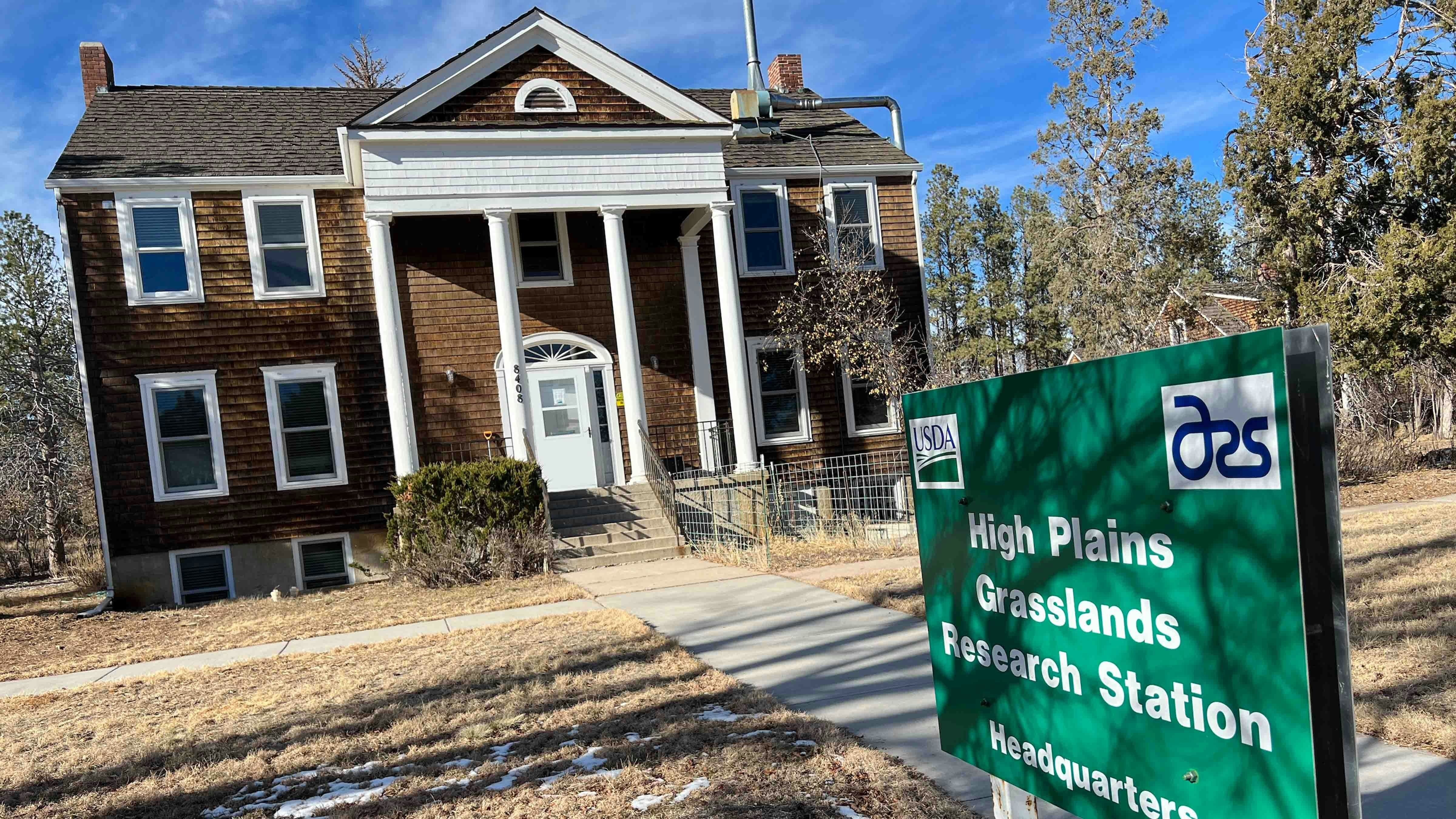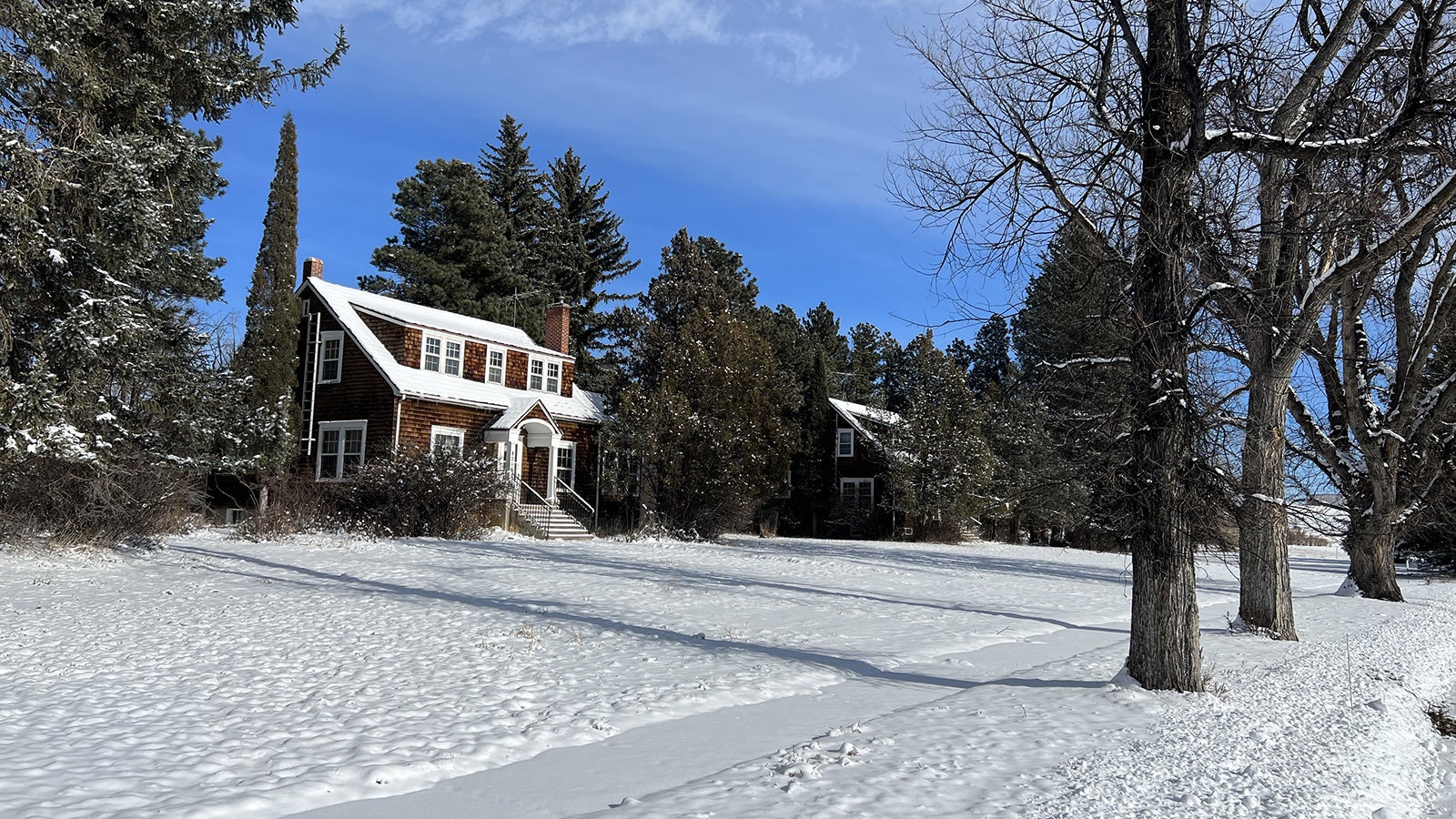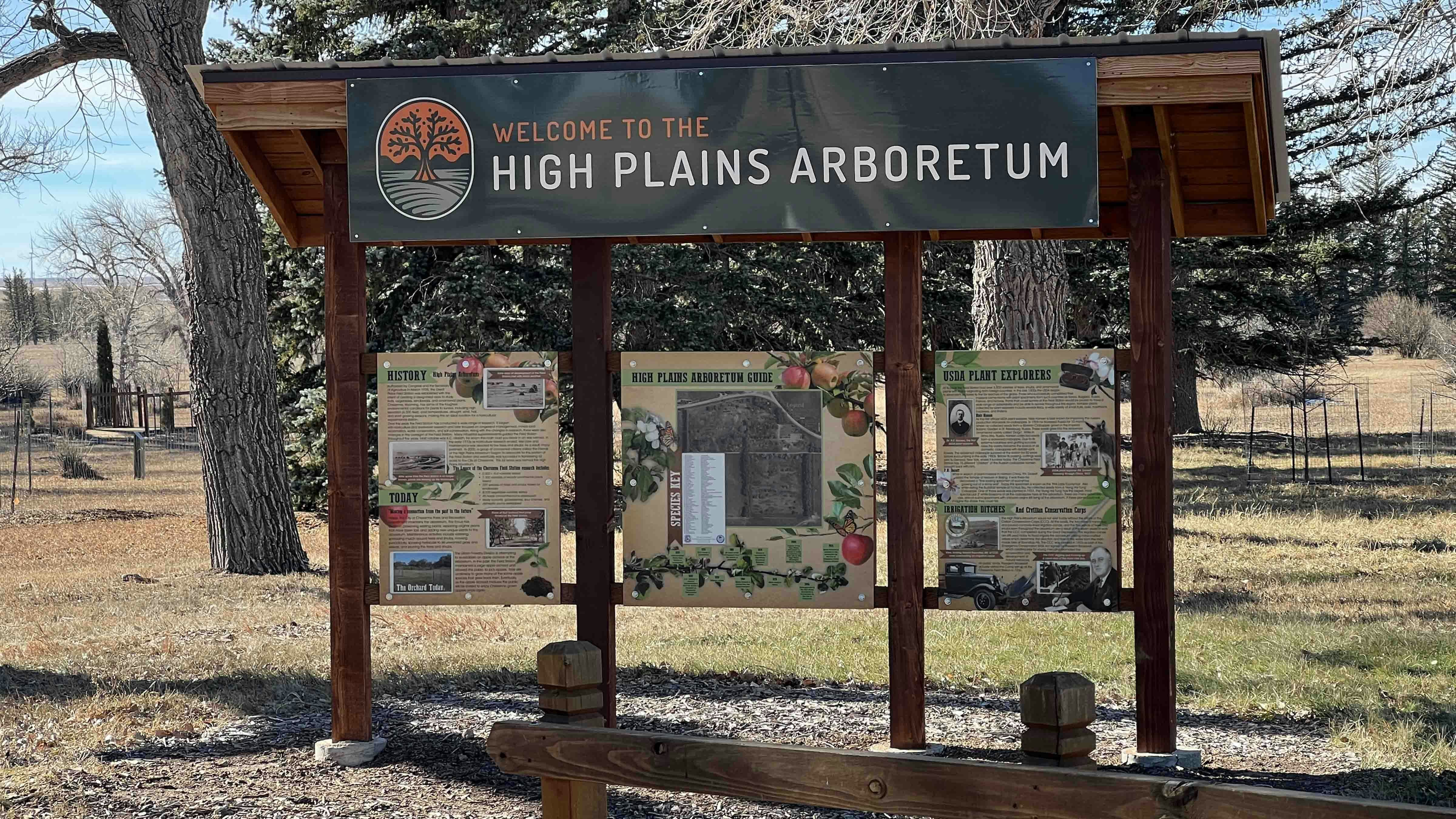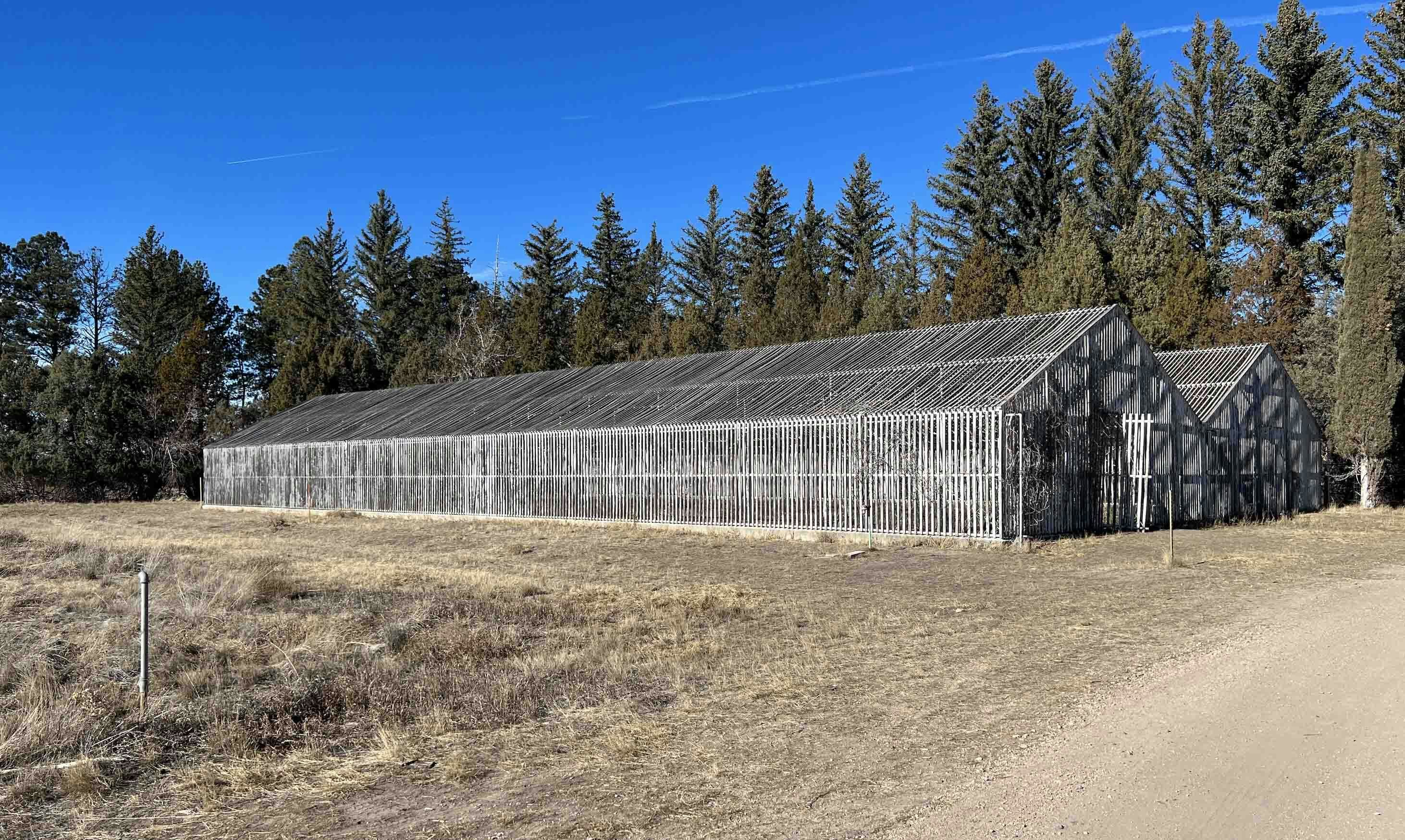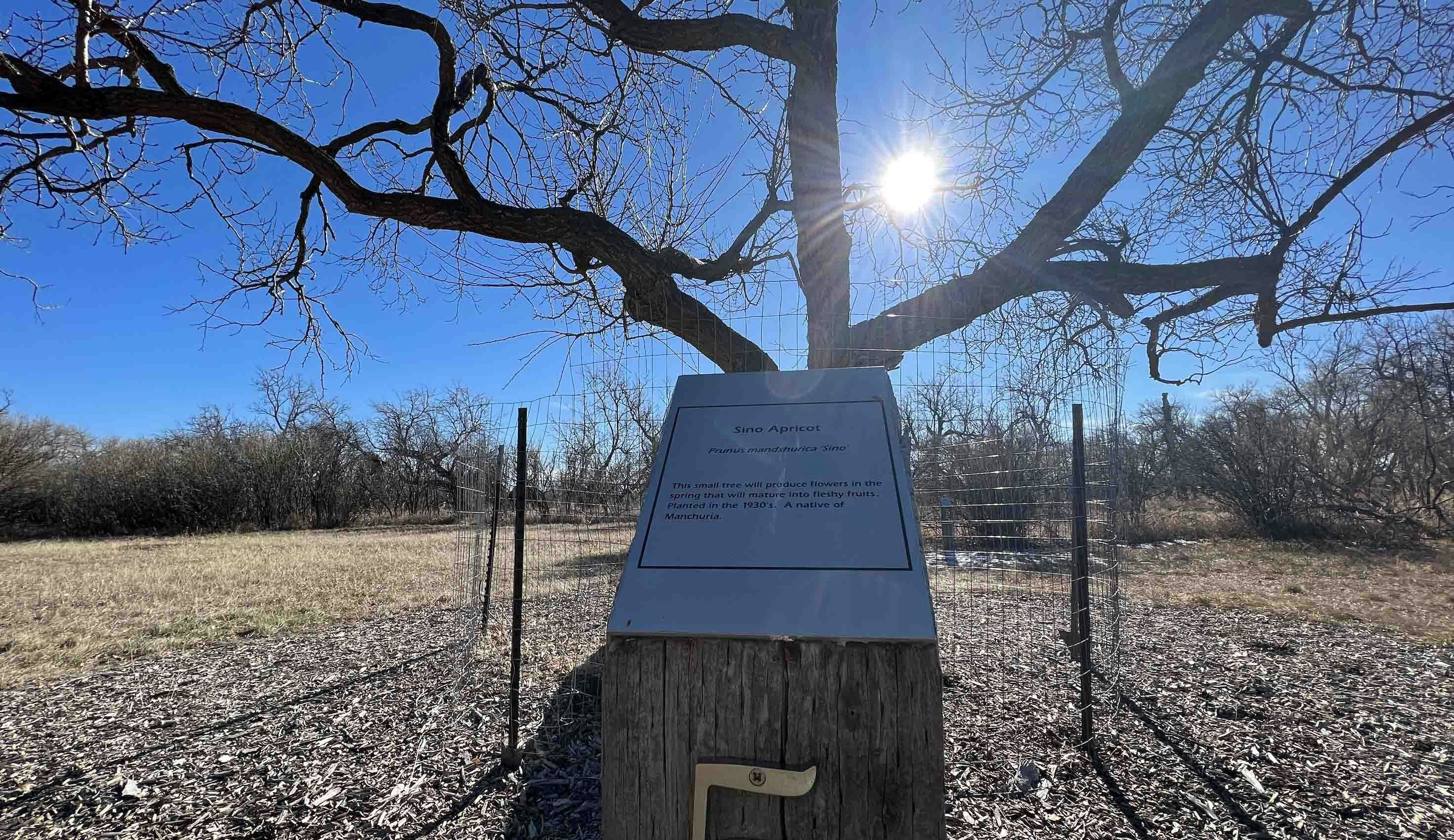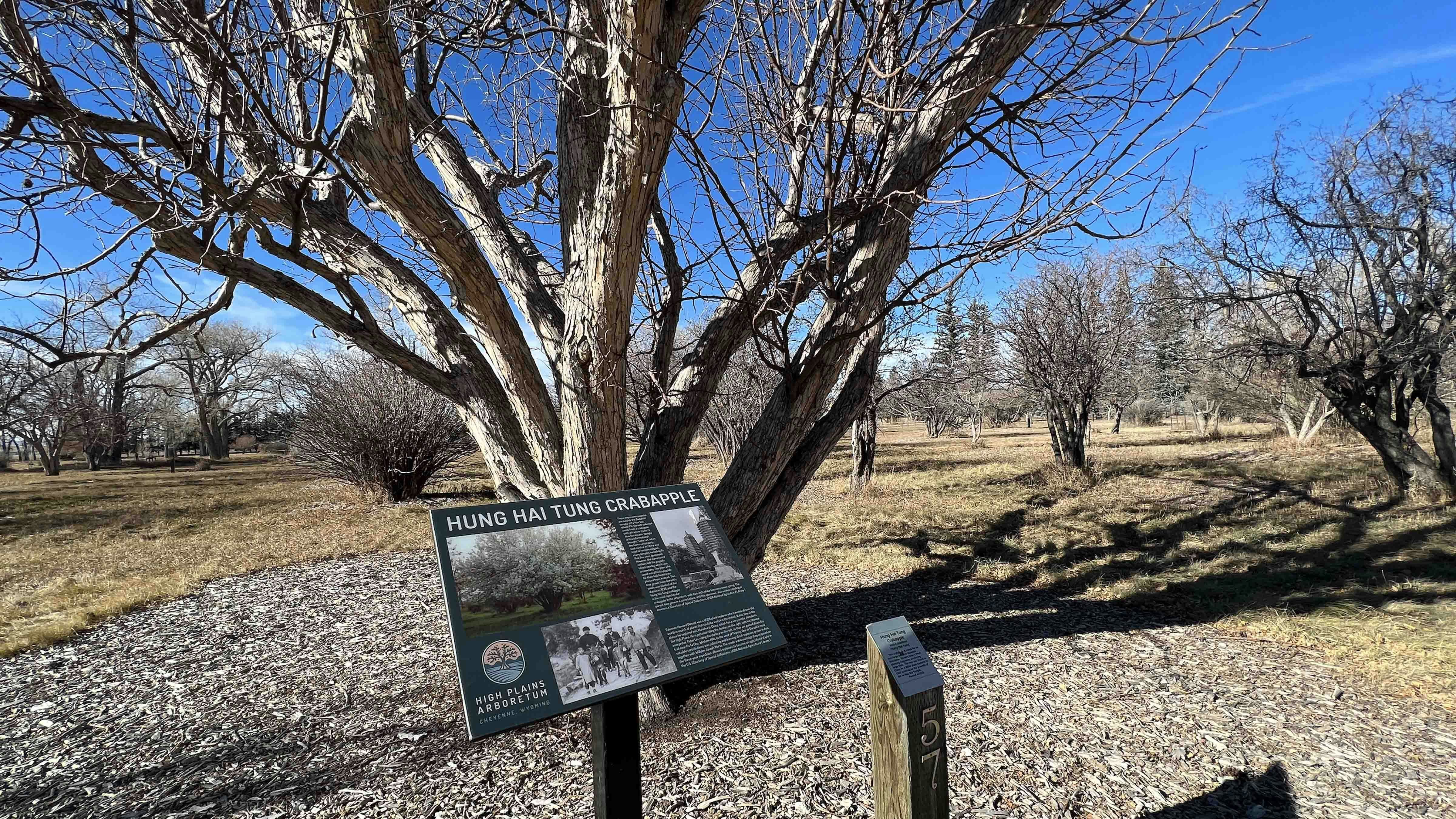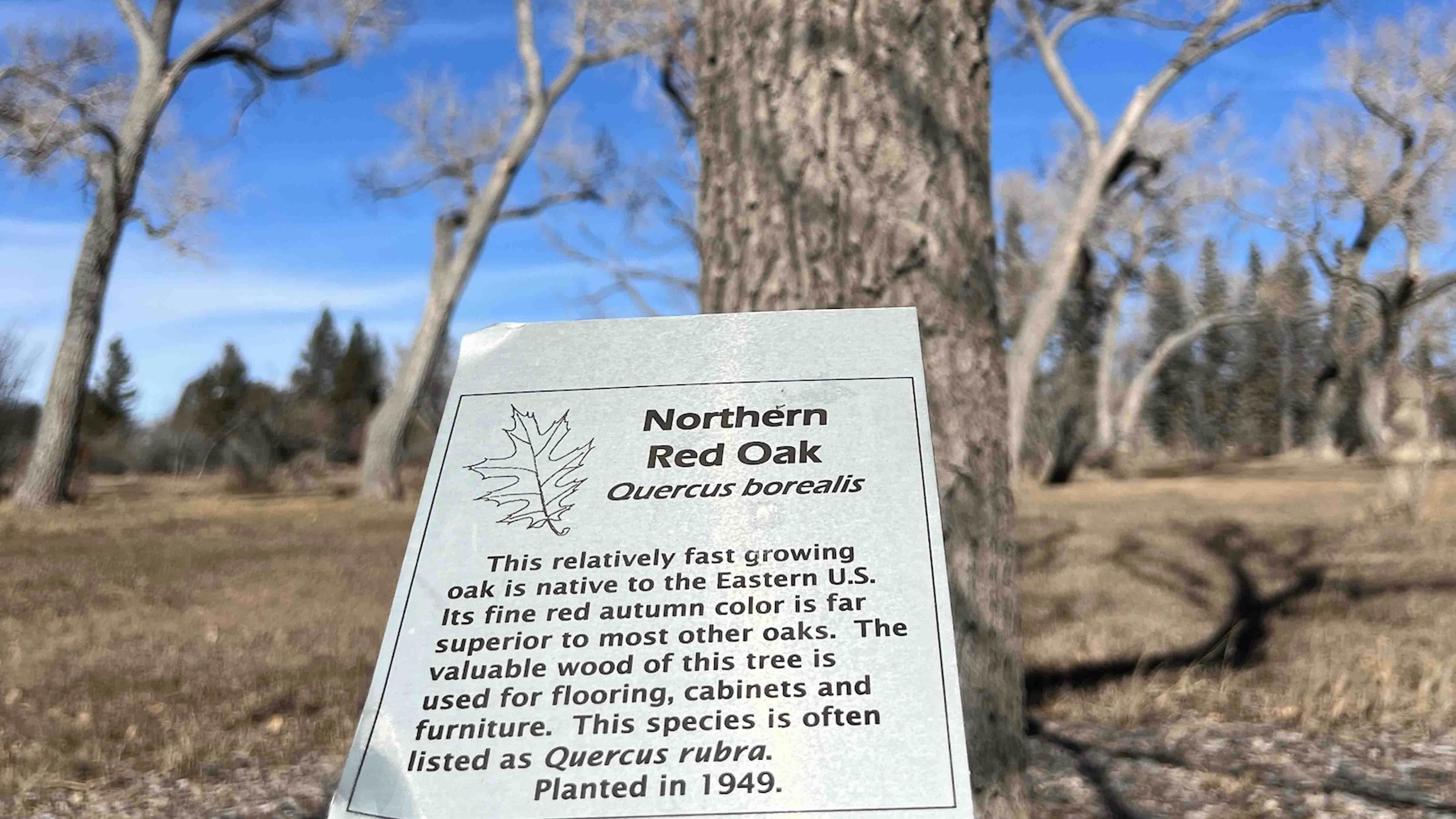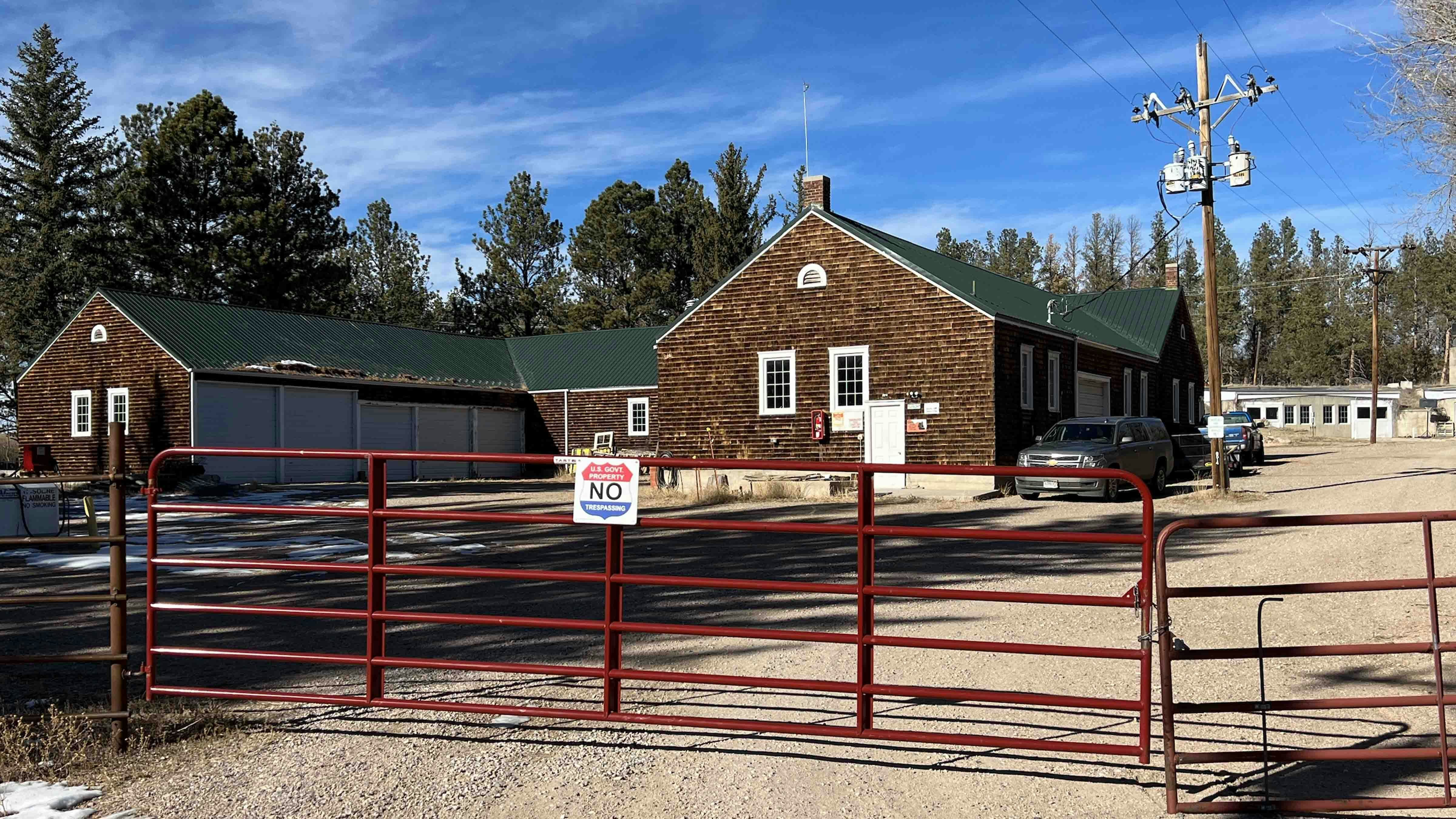How a Wyoming Project Transformed the Arid Great Plains and Rangelands
I was fortunate to work with a group of volunteers whose goal was to save the existing trees, shrubs, and flowers at the Cheyenne High Plains Horticulture Research Station, now referred to as the High Plains Arboretum.
This group was associated with the Cheyenne Botanic Gardens and included regional arborists, educators and extension professionals from CSU and UW, nursery professionals, historians and interested citizens. In 2007 because of their work, 138 acres of land was removed from the original USDA lease of 2139 acres.
This put historic trees dating back to the 1930s research blocks, under the City of Cheyenne’s control for management through the Cheyenne Botanic Gardens and Cheyenne Forestry Divisions.
Unfortunately, resources have been scarce for the High Plains Arboretum and needed maintenance has been deferred. But there is hope.
There is a current proposal to pool resources and cooperatively operate it with the City of Cheyenne as a State of Wyoming Historic Site. If this doesn’t occur, historic structures could fall into disarray, more treasured plants could be lost, and development could occur that would eliminate the historic nature of the site.
To fully understand the importance of this site it helps to understand the broader history of the High Plains of which Wyoming is a part.
A Place Unfit for Any but a Nomad
The High Plains were the last part of America to be settled. In 1820 early explorer Maj. Stephen Long and fellow explorer and botanist, Edwin James said the region was “Almost wholly unfit for cultivation” and “an unfit residence for any but a nomad population.”
Many passed through on their way to promises of free fertile land and gold in the far west. Because of the High Plains’ harsh climate, few were interested in living there.
It was only sparsely settled by people who eked out a meager existence. In the early 1900s people were riding in street cars in San Francisco, while High Plains residents were barely surviving in sod houses as there were so few trees.
With all the challenges of surviving including high winds, poor growing climate, and few natural resources, suicide was commonplace.
False Promises Lead to Ecological Disaster
In the early 20th Century, the federal government decided to encourage settlement in the last remaining part of the US yet to be settled, the Great Plains. The feds offered farmers free land and promises of riches.
Farmers were falsely told that the region could be transformed into a “Garden of Eden” with the widely held, but erroneous theory, that “farming causes more rain to fall.” Farmers arrived and started their crops. First, they removed the native grasses using deep plowing techniques.
They raised livestock and grew corn, sorghum, and wheat. This settlement coincided with an unusual period of abundant moisture, but it had nothing to do with farming. As a result, the crops initially grew well, and grain prices were high.
The farmers got rich. This encouraged even more people to settle there. Drought was a regular natural occurrence on the Plains, and it was only a matter of time before the skies dried up. The original native grass survived droughts and held the soil in place, but the grass was either plowed under or overgrazed. In 1930 a drought began, and the crops started faltering. The soil started to blow away.
The Horror of the Dust Bowl
Most people are peripherally familiar with the 1930s dust bowl, but few today comprehend the extreme brutality it wrought. The drought turned out to be more severe than most and was combined with unusually high temperatures.
While Wyoming felt some of the impacts, the worst impacts were in northeast New Mexico, northern Texas, western Oklahoma, southeast Kansas, and southeast Colorado. It wasn’t just a few severe dust storms, some years there were as many as 38 storms and some years as few as 14. The drought and dust storms continued for almost a decade.
Adding insult to injury, in late 1929 the Great Depression started. Eventually the price of grain crashed making the harvests almost worthless. As a result, thousands of acres were abandoned and with no crops growing, there was even less protection from the wind.
Almost all residents suffered from “Dust Pneumonia.” Livestock were blinded and suffocated by the dust. When cattle were butchered, they found stomachs half full of dust. Starvation was threatening, causing residents to figure out how to process and eat tumbleweed. Many left to become migrant workers, but many stayed as the Depression gave them little hope for employment elsewhere.
The dust caused excessive static electricity in the air. It was common to see large blue sparks jumping from barbed wire. Friends shaking hands could generate a spark so powerful that it could shock grown men to the ground, much like being Tasered.
Because of the strong static electricity, automobile engines would short-out. Residents learned to drag a heavy chain behind their vehicles to ground them, preventing electrical short-outs that caused damage.
One Dust Storm Takes a Trip to the Atlantic Seaboard
The most severe dust storm occurred on April 14, 1935, known as “Black Sunday”. The day began as a beautiful sunny day.
Then the sky turned black. It became the worst dust storm in American history and caused major economic and agricultural damage even beyond the Plains. It displaced over 300 thousand tons of topsoil. It traveled all the way to the eastern seaboard and into the Atlantic Ocean.
It even created a fog of prairie dirt covering the Statue of Liberty and the U.S. Capitol. Fittingly, on that exact day the Congress was debating a soil conservation bill. This storm bolstered the federal government to act after they experienced the Great Plains calamity firsthand.
President Roosevelt among others became convinced that planting more trees would help repair the devastation caused by the Dust Bowl.
A Wyoming Project remakes the High Plains and the Region
In the late 1920s Cheyenne attorney George E. Brimmer came up with the idea of Cheyenne having an agricultural research station.
He enlisted Wyoming’s Senator Francis E. Warren, who was great at getting “Pork Barrel” money for Wyoming. They were successful and it was authorized by Congress in 1928 and land was soon secured from the City of Cheyenne.
It was named the “Cheyenne High Plains Horticultural Field Station,” (Horticulture Station). Today it is often referred to as the “High Plains Arboretum.” Approximately 800 acres of the site is under consideration to become a State of Wyoming Historic Site in cooperation with the City of Cheyenne.
The Civilian Conservation Corp (CCC) helped construct infrastructure at the Horticulture Station including concrete irrigation ditches still in use today.
Also constructed was a potting shed building, glass greenhouses with chicken wire stretched over the glass to protect it from the inevitable hailstorms, cold frames, barns, root cellars, laboratory, office, on-site houses for staff and more. These historic structures remain.
A Man with A Vision
In 1930, Dr. A.C. Hildreth was hired as the director of the Station. He was certain that adapted plants could improve the quality of life on the High Plains.
In those days there were no national grocery store chains and most homes in the early 1930s lacked a refrigerator to store produce. Thus, his goal was to build a research program identifying, breeding and propagating shelterbelt trees, shade trees, fruits, flowers, ornamental shrubs, vines, and vegetables adapted to the harsh, higher-elevation conditions of the High Plains and surrounding region.
He understood one of reasons for the lack of settlement was that people living on the High Plains longed for greenery typical of eastern states and were unable grow shade trees or productive vegetable and fruit gardens, as the plants didn’t survive the harsh climate.
Two years into his position Hildreth reported that 866 fruit trees had been planted as part of a 1931 arid test for hardiness, and that 70 percent were still alive in 1932. This survival rate surprised him, because he noted it included many varieties not thought to be adapted to the High Plains. By the end of 1933, Dr. Hildreth recorded that nearly 6,000 new plants had been added to the Horticulture Station.
Also important to Dr. Hildreth was to focus on small fruits such as currants, gooseberries, raspberries, and strawberries. In fact, many of the Station’s hardy selections are still available in nurseries and catalogs today such as the Ogallala and Ft. Laramie strawberries among others.
Previously you couldn’t grow any variety of raspberries or strawberries on most of the High Plains, as they couldn’t survive the winter. There were also investigations into hardy shade trees, productive fruit trees and flowering plants that could enhance the quality of life on the Great Plains.
One of the Harshest Growing Climates in the Lower 48 states
Cheyenne has one of the most challenging garden climates in the lower 48 states. Nationally it is number one for hail, averaging 10 hailstorms per year. It’s the fourth windiest city in the nation (Chicago is 8th, Casper is 5th) having a daily average wind speed of 13 mph.
Cheyenne receives an average annual precipitation of 15”. Temperatures can drop to -30 degrees. The 6,000 ft. elevation causes cool summer nights and mild summer days.
The cool summers challenge even the earliest tomato variety to produce fruit, assuming hail doesn’t destroy the plant. Cheyenne often has little winter snow cover. Winter watering of young woody plants is required to prevent desiccation.
The Horticulture Station Was the Acid Test
Given the climate, did it make sense to have an agricultural research station in Cheyenne? The answer is yes. This turned out to be the perfect place to test plants destined for the arid Great Plains. There were two other USDA research stations on the Great Plains; Mandan, North Dakota and Woodward, Oklahoma.
Both were in more hospitable climates than Cheyenne. It was often believed if a tested plant destined for the High Plains survived Cheyenne’s “acid test,” they would be able to survive anywhere on the Great Plains. The Mandan and Woodward Stations would often send plant selections to the harsh environs of Cheyenne to ensure they could survive before they were released to the public.
Throughout the Horticulture Station’s history, it benefited from international plant explorers sent by the USDA to search for plant candidates that could help make the Great Plains flourish. Many of these plants were tested in Cheyenne. Thus, the collection of plants at the Station came from all over the world.
What does the Cheyenne Horticulture Station Have to do with the Dust Bowl?
The Horticulture Station’s earliest research was to study how to design and grow successful shelterbelts to protect agricultural land from the wind.
They researched which trees and shrubs were best able to survive a harsh climate. They developed guidelines for establishment and spacing between the trees. One important discovery was the practice of removing (by plowing) all the grasses and other plants growing next to and near the shelterbelt’s trees and shrubs. This practice significantly accelerated growth.
Their shelterbelt research came at the perfect time. In 1934 President Roosevelt initiated the “Great Plains Shelterbelt Project” to promote and create shelterbelts across the Great Plains in response to the Dust Bowl. The Station’s research was ready to guide this endeavor. By 1942 Roosevelt’s Shelterbelt Project had planted 30,233 shelterbelts, which contained 220 million trees and covered 18,600 square miles.
Rarely, do presidents take an interest in agricultural research, but in October of 1936, Roosevelt arrived in Cheyenne by train and went to the Horticulture Field Station to visit Dr. A. C. Hildreth, to see how the research was proceeding. By all accounts, the Station’s work was impressive with many successes.
By the mid-1970s the Station had tested over 200 species of trees and shrubs for shelterbelts, 2,000 fruit varieties, 8,000 vegetable varieties, 1,300 varieties of ornamental trees, and thousands of small fruits.
A New Mission for the Station
In 1959 Dr. Hildreth resigned his position to become the Director of the Denver Botanic Gardens. Hildreth’s protégé, Gene Howard, was much like Hildreth as a productive horticulturist. In 1964 he became the Station’s Superintendent.
In 1974 the USDA decided to transform the Station from horticultural research to researching grazing, mine land reclamation and water conservation. It was renamed the High Plains Grasslands Research Station. Gene Howard led the transformation. This change was prompted in part because the Horticulture Station had already proven its ability to transform the High Plains for the better.
Many hundreds of the original trees remain in a section of the Station’s site (what is now known as the High Plains Arboretum). Unfortunately, many plants have been lost over the years due to drought, or lack of maintenance. But many valuable plants remain. Horticulturists still come from all over the region to study the remaining plants, often finding them worthy of propagation.
The High Plains Grasslands Research Station continues at the site and is the recipient of numerous awards and accolades for its research, which includes better methods for mine land reclamation, cattle grazing, weed control and rangeland management.
They have done cutting edge work on the value of grasslands in carbon sequestration. The Station’s work continues to be a vibrant source of transformative information for farms, ranches and grasslands management across the arid Great Plains and valleys, including Wyoming.
Wyoming’s Gift
It is my hope that Wyoming commits to educating its citizens about their amazing history. Wyoming had a major influence in transforming the arid Great Plains and rangelands.
People living on the Great Plains may not know it, but almost every town and farmstead likely grows shelterbelts, shade trees, shrubs, fruits trees, small fruits or vegetables that had their origins from the High Plains Horticulture Station.
Large swaths of Nebraska, Kansas, Colorado, Oklahoma, and Wyoming would look very different if it were not for the transformative gift from Wyoming’s High Plains Horticultural Research Station.
Wyoming needs to show its pride in our ever present “can do” spirit that resulted in productive farms and ranches; towns with tree lined streets, flowers blooming, productive fruit, and vegetable gardens.
One woman who lived through the Dust Bowl was quoted as saying “We lived in a brown world.” What started as one of the worst ever man-made ecological disasters in the Dust Bowl, has been transformed into healthy verdant livable places.
Now is a rare opportunity to preserve that history as a Wyoming Historical Site or otherwise take the chance of losing it forever.
Shane Smith was the founder and Director of the Cheyenne Botanic Gardens for 41 years.

